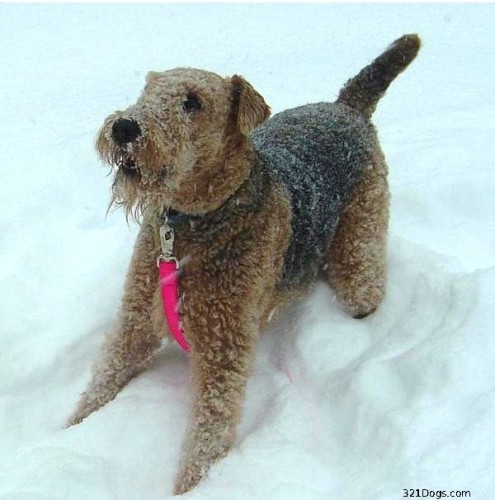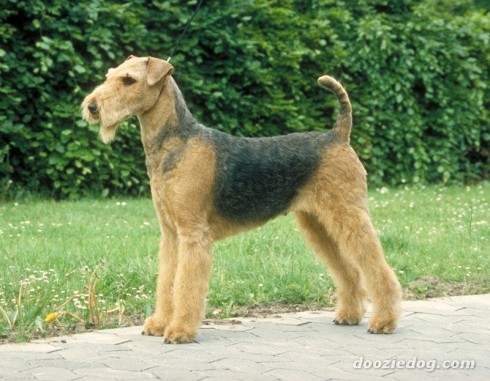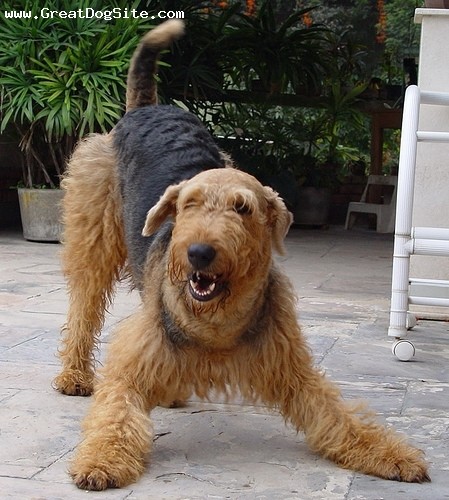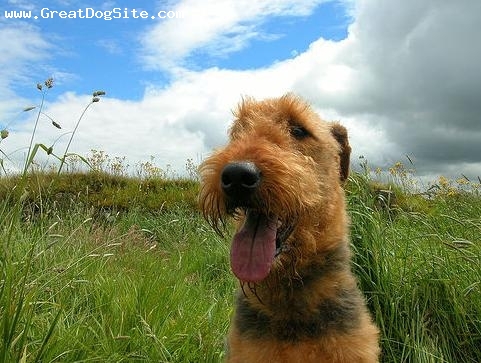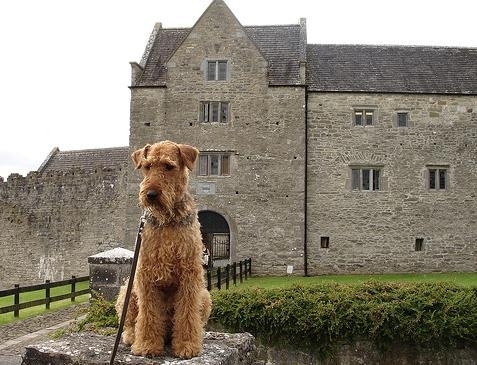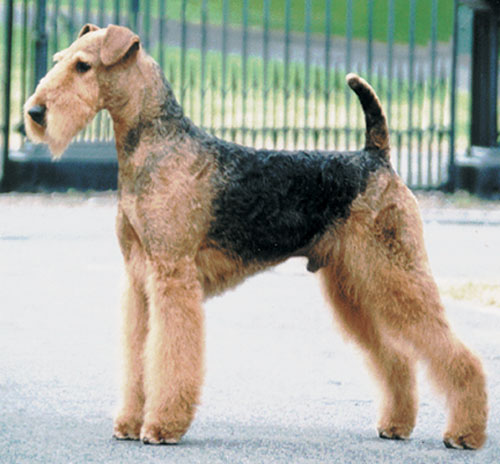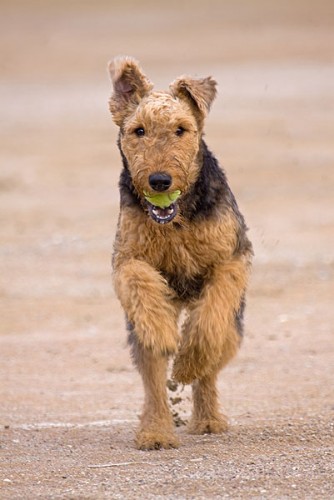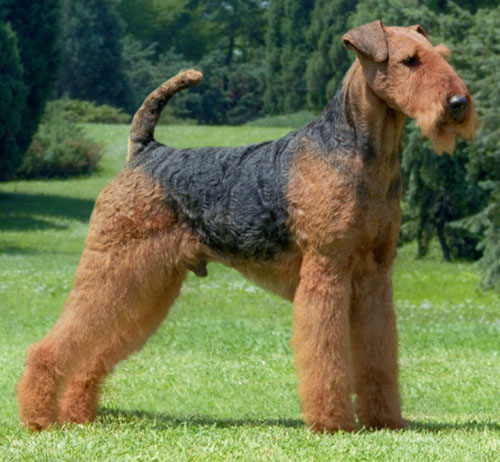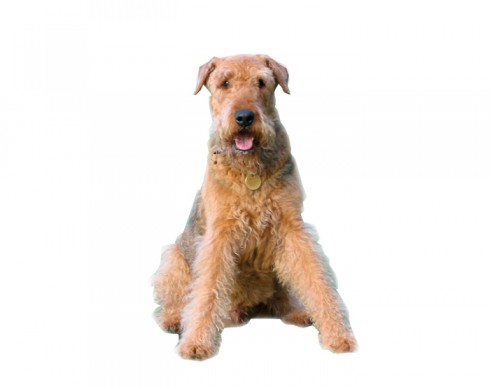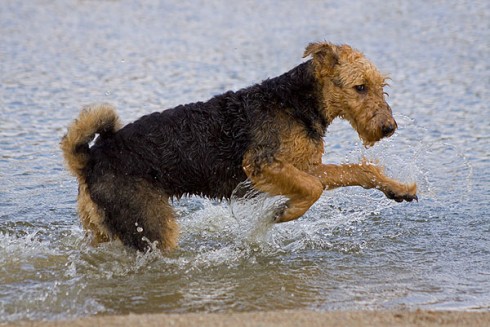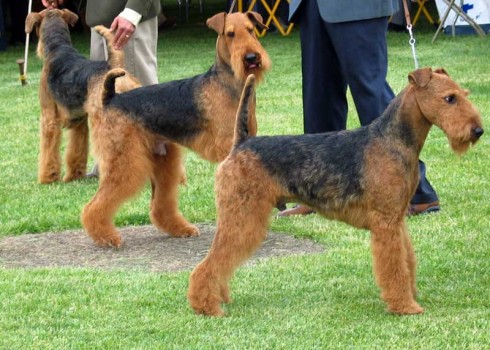Main Index
In Store
Our Web Store
Miniature Schnauzer Picture Gallery
Latest Dog Blogs
- What Are The Basic Commands To Train A Dog?
- PaySafe As The Most Popular Type Of Deposit
- Everything You Need To Know About Pet Sales
- Dogs Contribute To Our Physical And Mental Well Being
- How To Choose Where To Bet On Greyhounds In 2022
- Volunteer With Animals - How To Help Dogs Around The World
- Basic Understanding Of The House Edge
- Why You Should Get A Dog
- Top 20 Popular Dog Names Around The World
- Constipation in Dogs and How to Find Solutions
Airedale Terrier
Airedale Terrier Picture Gallery
Airedale Terrier Clubs/Associations
The Full Airedale Terrier Description
Airedales are a good natured and fun-loving breed. They have an excellent reputation with children, but should always be supervised during play.
Did you know?
The Airedale was one of the first breeds used for police duty in Germany and Great Britain.
From 1864 and on, the earlier whelps were called Working, Waterside, and Bingley Terriers.
The breed was used for wartime guard, messenger duty, rodent control, hunting birds and game.
So you want to own an Airedale Terrier?
The Airedale Terrier is the largest of the terrier breeds.
The Airedale's coat is tan with black markings on the sides and upper parts of the body. The coat is dense and wiry; it requires a great deal of grooming and may need professional help to maintain.
Indicative Breed Standard
General Appearance
Largest of the Terriers, a muscular, active, fairly cobby dog, without suspicion of legginess or undue length of body.
Characteristics
Keen of expression, quick of movement, on the tiptoe of expectation at any movement. Character denoted and shown by expression of eyes, and by carriage of ears and erect tail.
Temperament
Outgoing and confident, friendly, courageous and intelligent. Alert at all times, not aggressive but fearless.
Head and Skull
Skull long and flat, not too broad between ears, and narrowing slightly to eyes. Well balanced, with no apparent difference in length between skull and foreface. Free from wrinkles, with stop hardly visible; cheeks level and free from fullness. Foreface well filled up before eyes, not dish-faced or falling away quickly below eyes, but a delicate chiselling prevents appearance of wedginess or plainness. Upper and lower jaws deep, powerful, strong and muscular, as strength of foreface is greatly desired. No excess development of the jaws to give a rounded or bulging appearance to the cheeks, as ‘cheekiness’ is undesirable. Lips tight, nose black.
Eyes
Dark in colour, small, not prominent, full of terrier expression, keeness and intelligence. Light or bold eye highly undesirable.
Ears
V-shaped with a side carriage, small but not out of proportion to size of dog. Top line of folded ear slightly above level of skull. Pendulous ears or ears set too high undesirable.
Mouth
Teeth strong. Jaws strong. Scissor bite, i.e. upper teeth closely overlapping lower teeth and set square to the jaws preferable, but vice-like bite acceptable. An overshot or undershot mouth undesirable.
Neck
Clean, muscular, of moderate length and thickness, gradually widening towards shoulders, and free from throatiness.
Forequarters
Shoulders long, well laid back, sloping obliquely, shoulder blades flat. Forelegs perfectly straight, with good bone. Elbows perpendicular to body, working free of sides.
Body
Back short, strong, straight and level, showing no slackness. Loins muscular. Ribs well sprung. In short-coupled and well ribbed-up dogs there is little space between ribs and hips. When dog is long in couplings some slackness will be shown here. Chest deep (i.e. approximately level with elbows) but not broad.
Hindquarters
Thighs long and powerful with muscular second thigh, stifles well bent, turned neither in nor out. Hocks well let down, parallel with each other when viewed from behind.
Feet
Small, round and compact, with a good depth of pad, well cushioned, and toes moderately arched, turning neither in nor out.
Tail
Customarily docked.
Docked: Set on high and carried gaily, not curled over back. Good strength and substance. Tip approximately at the same height as top of skull.
Undocked: Set on high and carried gaily. Not curled over back. Good strength and substance.
Gait/Movement
Legs carried straight forward. Forelegs move freely, parallel to the sides. When approaching, forelegs should form a continuation of the straight line of the front, feet being same distance apart as elbows. Propulsive power is furnished by hindlegs.
Coat
Hard, dense and wiry, not so long as to appear ragged. Lying straight and close, covering body and legs; outer coat hard, wiry and stiff, undercoat shorter and softer. Hardest coats are crinkling or just slightly waved; curly or soft coat highly undesirable.
Colour
Body saddle black or grizzle as is top of the neck and top surface of tail. All other parts tan. Ears often a darker tan, and shading may occur round neck and side of skull. A few white hairs between forelegs acceptable.
Size
Height about 58-61 cms (23-24 ins) for dogs, taken from top of shoulder, and bitches about 56-59 cms (22-23 ins).
About Our Article Directory
- Article
- 27 November 2010
- 2 comments
Canis lupus familiaris
- Breed Article
- 29 May 2010
- No comments
Quick Search
Donate
Latest Dog Pods
- Tips on How to Stop Your Dog from Biting
- Beware - Not All Advertised Dog Rescues Really Are! How Can You Know The Truth?
- Helpful Tips For Dog Obedience Problems
- How to Keep Dogs From Eating Poop
- Dog Grooming Tips - A General Overview of the Very Basics of Dog Grooming
- Recognising Different Types of Dog Obedience Problems
- 5 Important Tips On Feeding A Puppy


